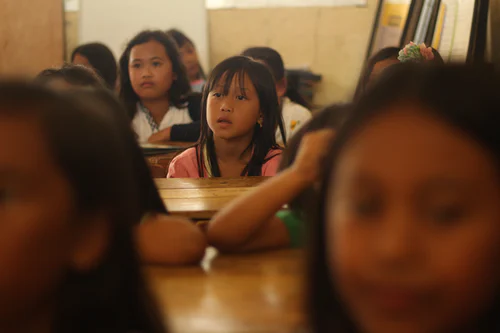Autistic children appear to be vulnerable to feeling anxious for much of their school day, often experiencing extreme anxiety in anticipation of, or in response to, specific events, such as the sound of the school bell, making a mistake or having a replacement teacher for the day. The association between autism and anxiety occurs across the range of expressions of Autism Spectrum Disorder at all levels of intellectual ability and during the whole lifespan, from infancy to maturity.
What triggers anxiety at school?
An assessment of the circumstances associated with, or that create heightened levels of anxiety in the classroom for an autistic child can indicate an intolerance of uncertainty as well as a fear of making a mistake, or performance anxiety. There can be a fear of being targeted for bullying, teasing, rejection and humiliation, and anxiety associated with changes in routine or expectations. Socializing with peers is perhaps the greatest source of anxiety.
Anxiety can frequently be associated with specific social situations, such as those circumstances where there are no apparent or previously experienced social rules, or where the social codes or conventions are being deliberately broken by other children. There can be anxiety associated with complex and possibly novel social situations and performance anxiety in terms of being able to apply learned social responses and behaviour in real life social settings. The high level of anxiety experienced in social situations, such as the classroom or playground, may result in the child’s use of coping strategies that lead to a diagnosis of Separation Anxiety, where the child genuinely needs guidance and reassurance from a parent; and Selective Mutism (in terms of the flight, fight and freeze response to anxiety), where the child ‘freezes’ and is unable to speak in the classroom, but is verbally fluent when relaxed at home.
Sometimes, the teacher must be a detective or scientist, observing, collecting, and analysing the data or evidence regarding which situations and events can precipitate intense anxiety. Such situations may include:
- disruptions to established routines.
- circumstances where the child is expected to behave in a certain way but doesn’t know how.
- times when the child is prevented from carrying out certain expected activities or routines.
- instances where there are too many demands and expectations on the child.
- the experience of classroom and playground rules being broken.
- having a change imposed when the child is not ready for it.
- having to wait or hurry up.
- experiencing or observing social injustice.
- fear of making a mistake or that schoolwork is not perfect.
- being considered or called stupid by peers.
- unstructured social time, e.g. recess and lunch periods.
- fire drills and supply teachers.
- peer exclusion.
- accidental or deliberate light touch.
- misinterpretation of facial expressions.
- perceived or actual rejection.
- arrival at class late.
- an almost exclusive focus on what goes ‘wrong.’
Attwood & Garnett Events present Behaviour and Emotion Management for Children and Adolescents with Autism. This online training webcast will explore and explain signs and triggers of anxiety, why autistic children experience intense emotions, especially anxiety, and strategies for emotion expression and regulation that can be used at home and school.




